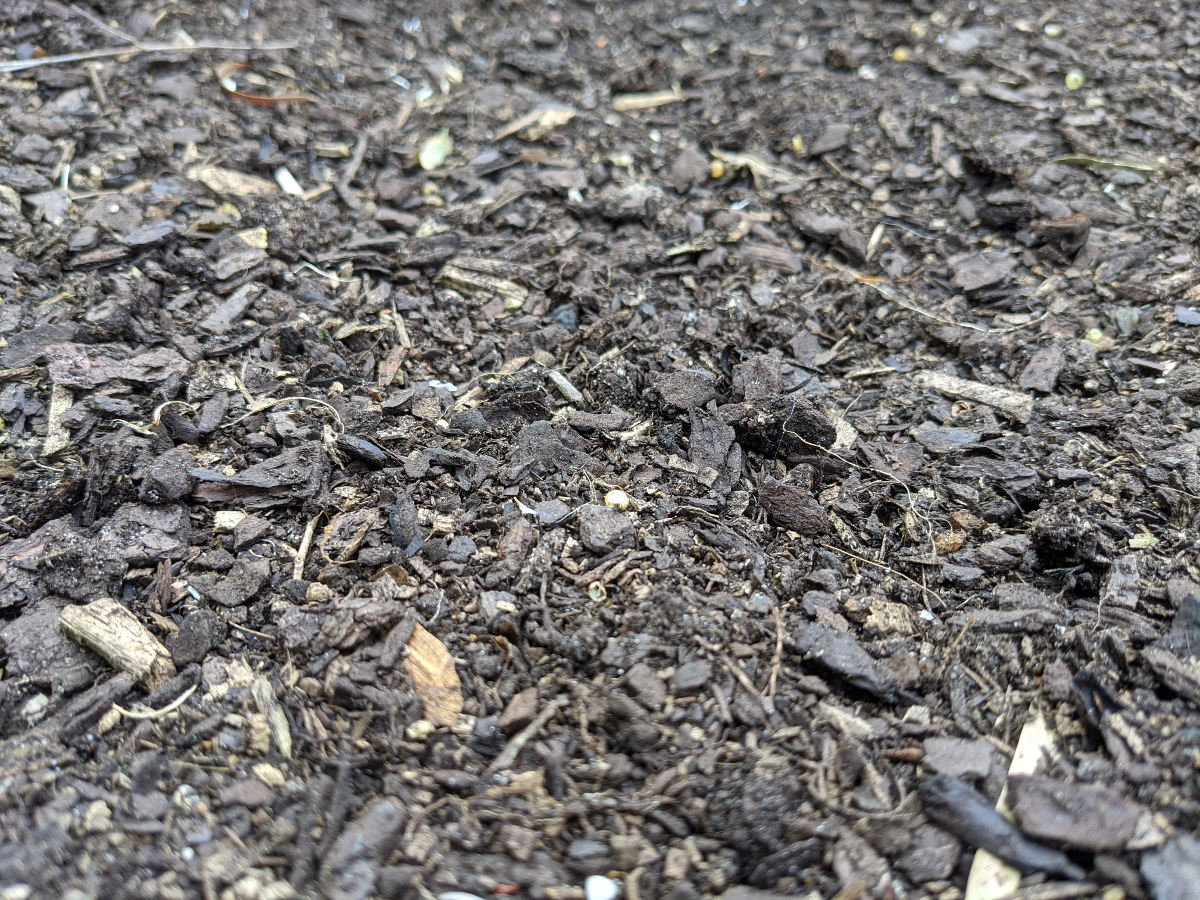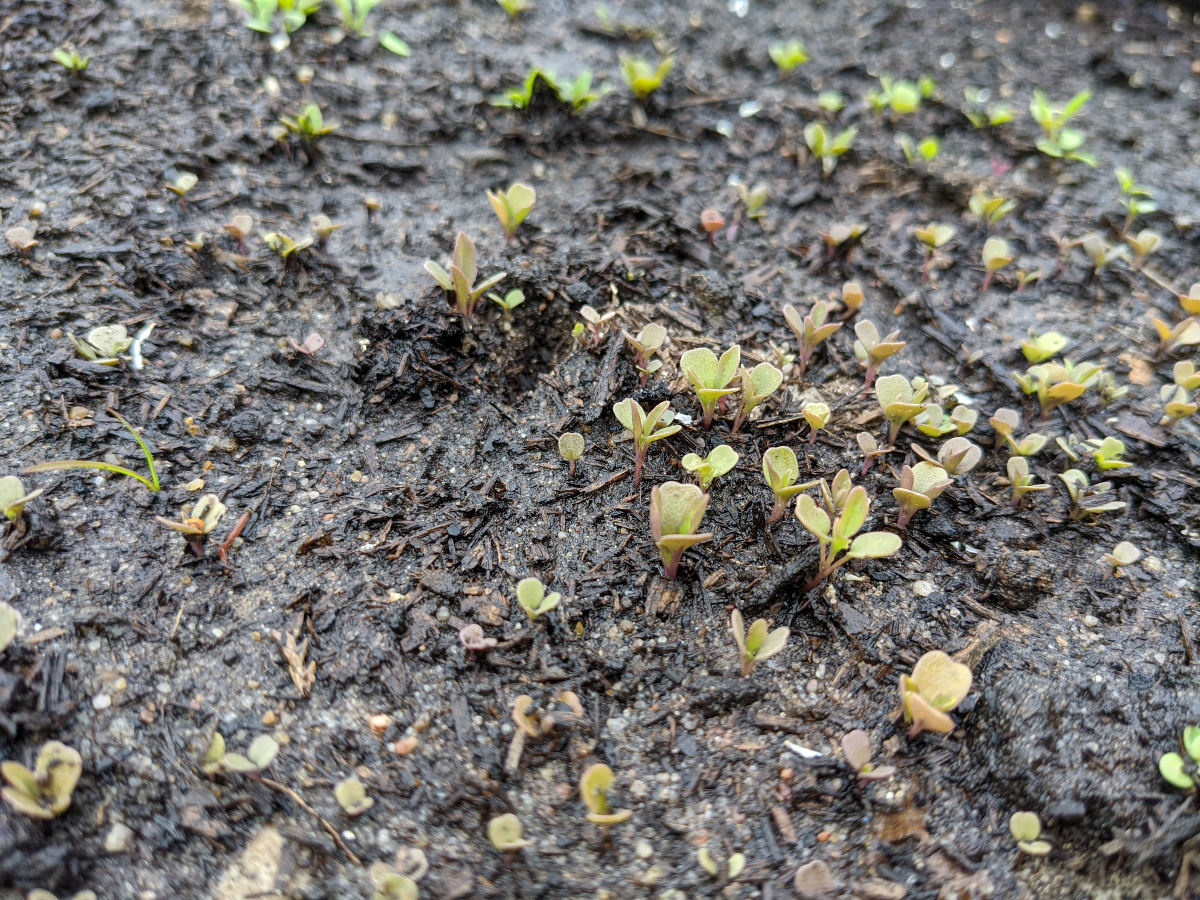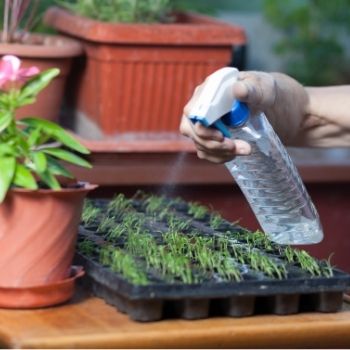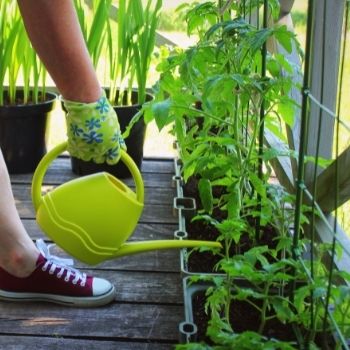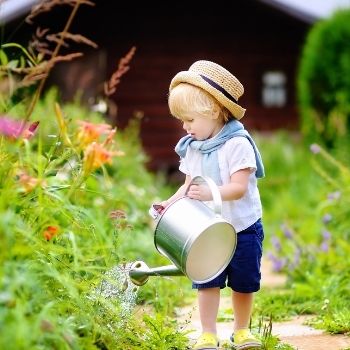To germinate, a seed needs the correct combination of light, temperature, and moisture. Unfortunately, getting the third condition right can be trickier than it might at first seem.
Too much water, and the seed can succumb to rot or mould. Too little, and the seed will either fail to germinate at all, or the emerging seedling will be parched and die soon after sprouting.
But there's also a third danger involved. Delicate seeds in fine compost can easily be displaced by the simple act of watering. The force of even a light stream of liquid can mean the seeds are washed away entirely, pushed too deep under the soil, or left languishing on the surface.
These problems are particularly common with seeds sown in containers, where light, loosely compacted compost is most often used. There's also more risk involved with small, surface-sown seeds such as lettuce, compared to larger nasturtium or bean seeds which are sown deeper and take more force to move out of place.
And the problems don't end once a seed has germinated. Until it's matured a little and set down a strong root system that anchors it in place, a splash of water in the wrong direction can uproot or flatten the seedling, neither of which bode well for future growth.
So, from the time of sowing until a seedling is well established, it's important to take care over watering, and there are several ways of doing it.
Watering Seeds from Below
For seeds in containers, by far the safest and surest way of watering is to do it from below. Sow your seeds as normal in pots or trays with holes in the bottom, and place the containers in a solid-based tray with sides that reach at least a quarter of the way up the height of the largest pot.
Add water to the tray until the level comes to just below the top. The water will soak up into the compost through capillary action, gently watering the seeds without disturbing them.
However, it's important to keep a close eye on the water level. Once the surface of the compost is visibly moist, drain any surplus water from the tray to prevent waterlogging and rotting. From then on, keep an eye on the soil's surface, and repeat the watering process whenever it dries out.
Watering More Safely from Above
If for any reason you can't use this method to water your seeds from below, here are five ways of watering more safely from above.
- Before sowing a seed, ensure that the soil or compost is already moist. This will minimise the amount of watering you need to do later, and also compact the soil a little, reducing the risk of displacing the seed.
- Use a mini greenhouse to keep the soil moist until after the seed germinates. Covering a pot with a tight, transparent seal can remove the need for watering almost indefinitely, but even a loose-fitting lid will help the soil retain moisture for longer.
- If watering is necessary, do it a little and often using small amounts to minimise the physical disruption, and water around the edges of the container rather than directly over the seed.
- Instead of pouring water from a watering can, use a garden sprayer or mister as needed to keep the soil surface moist until the seedlings have a solid foothold.
- For larger areas of open soil, use a watering can or hose with a fine-nozzled head that creates a spray rather than a directed stream, and water gently from a low height.
But whether you water from below or above, continue doing it with care until the seedling emerges and has grown strong enough to withstand the usual, more robust methods.
